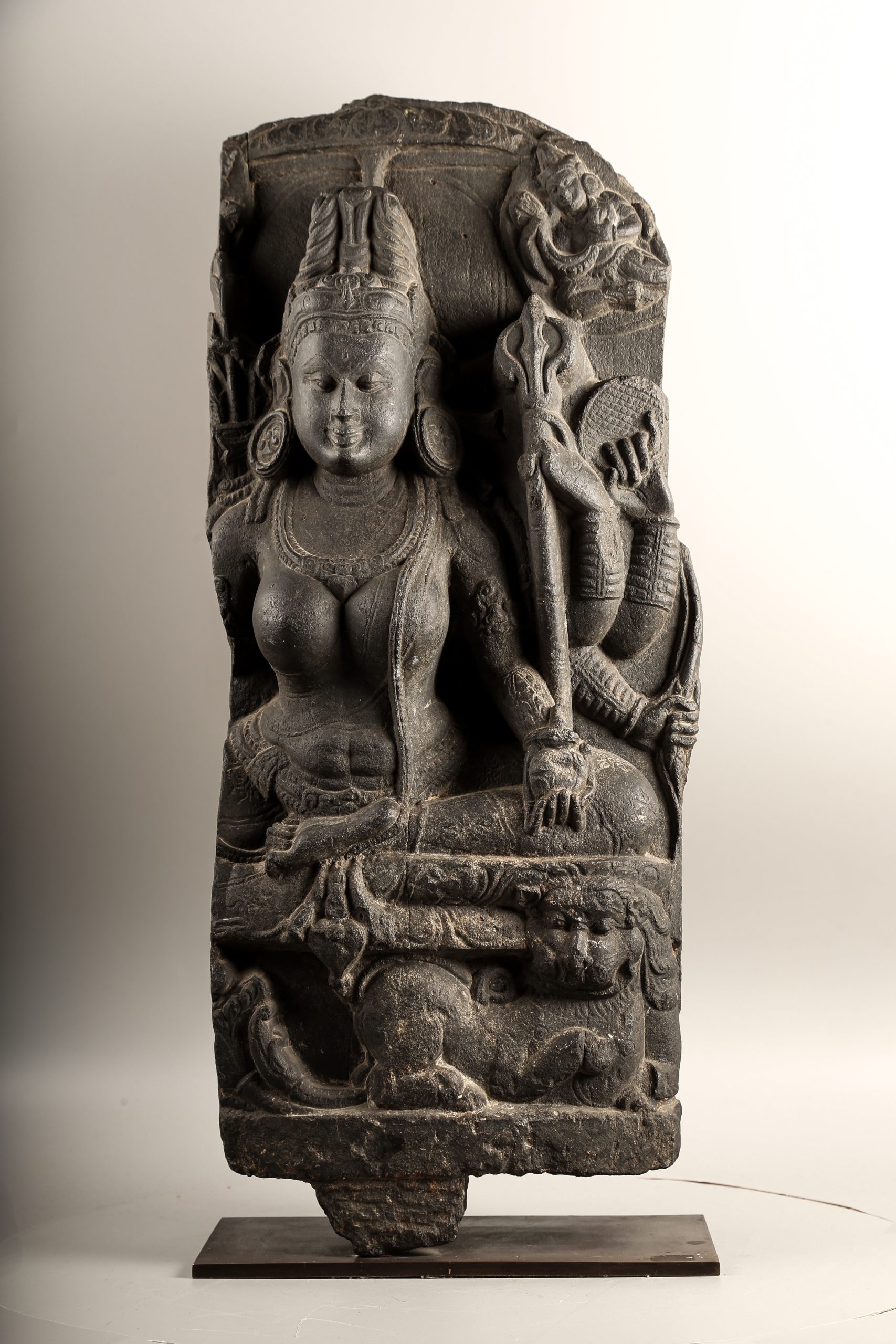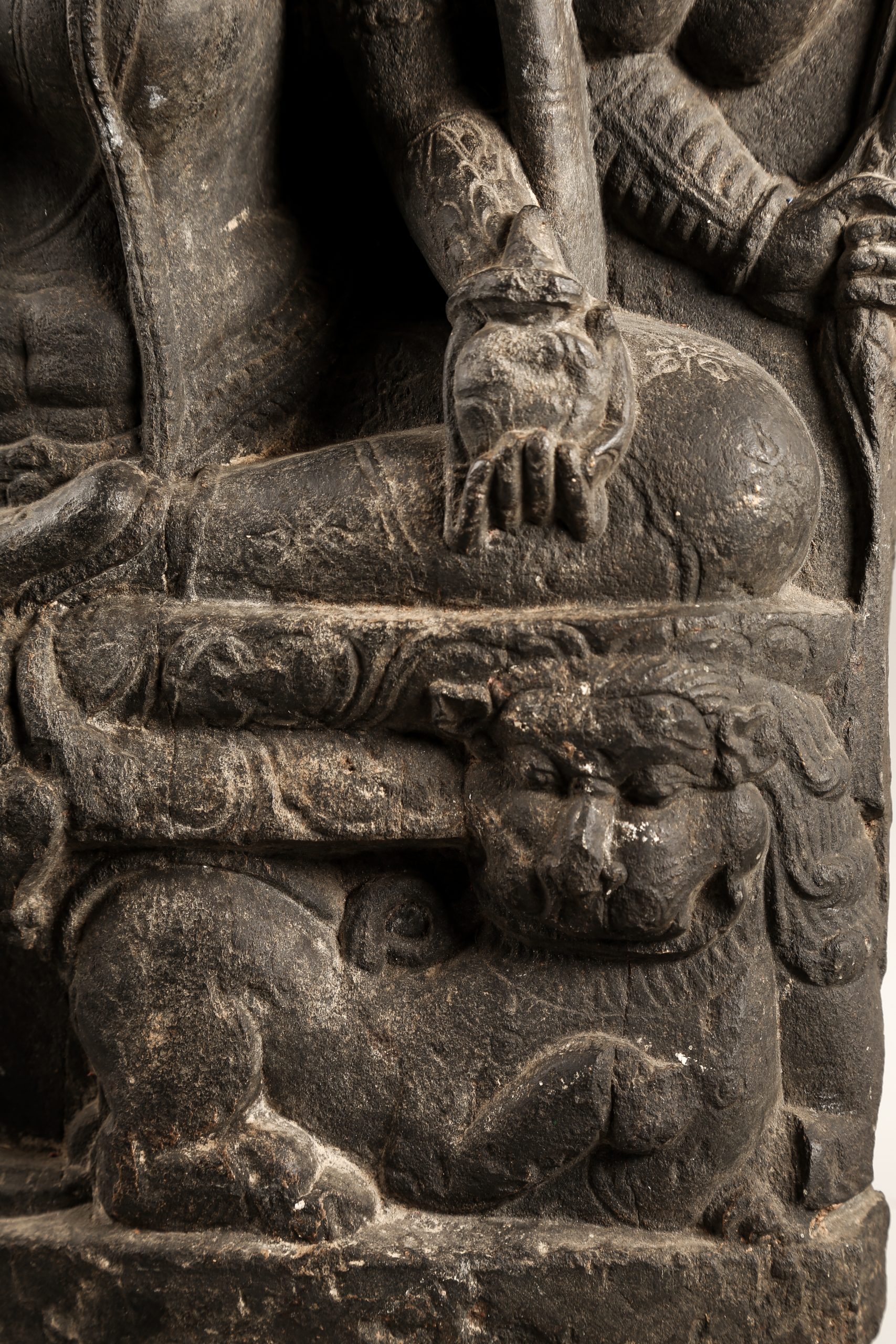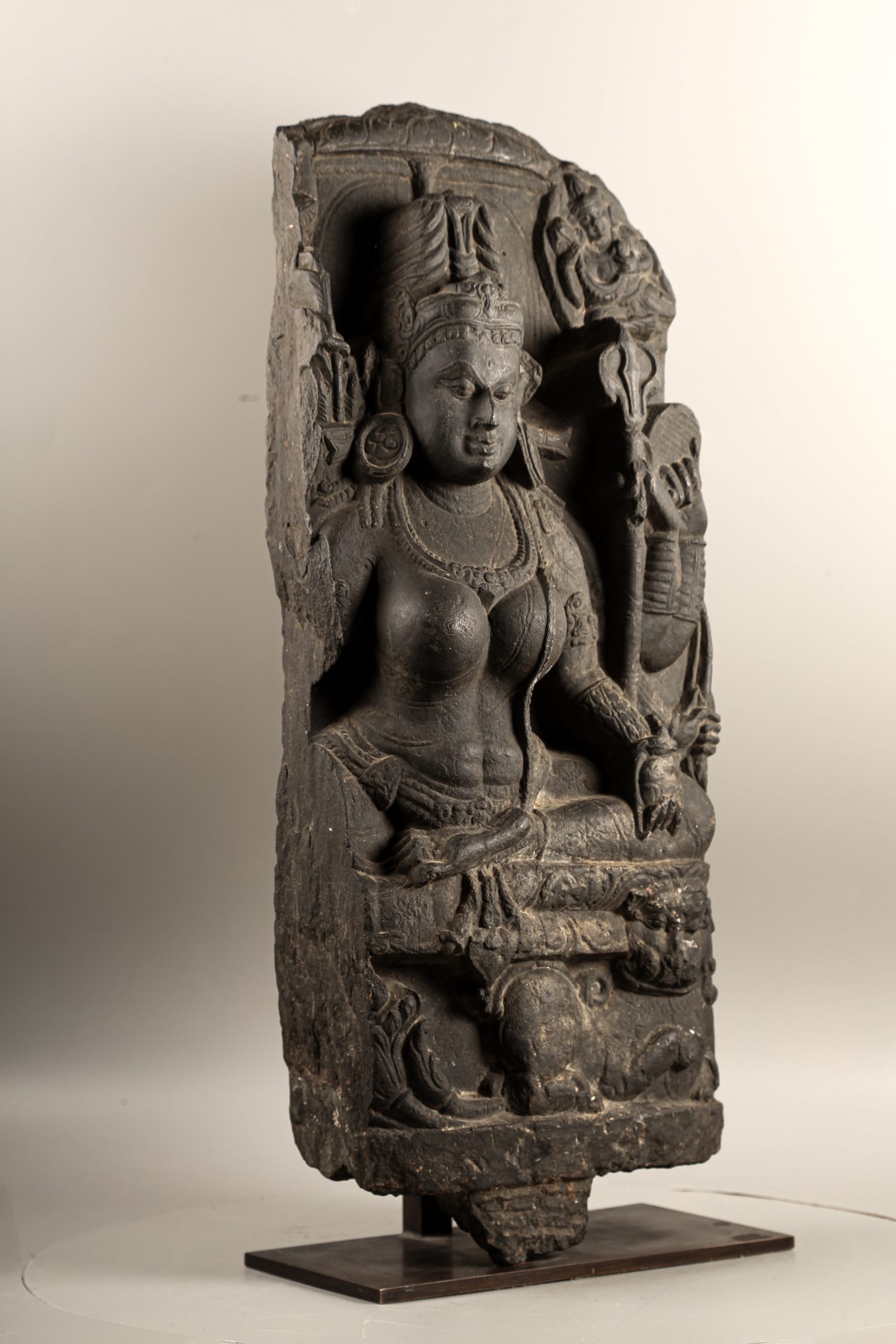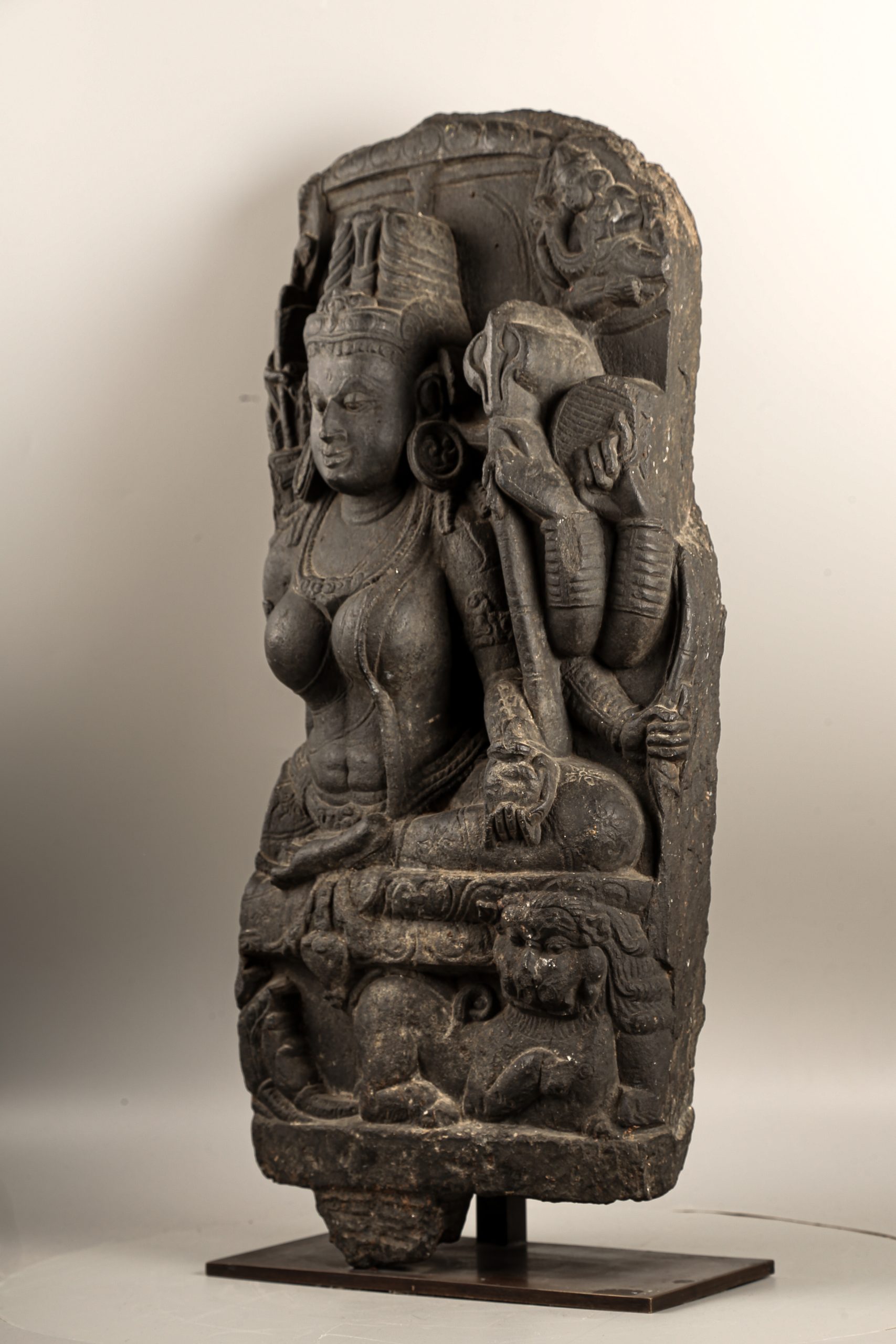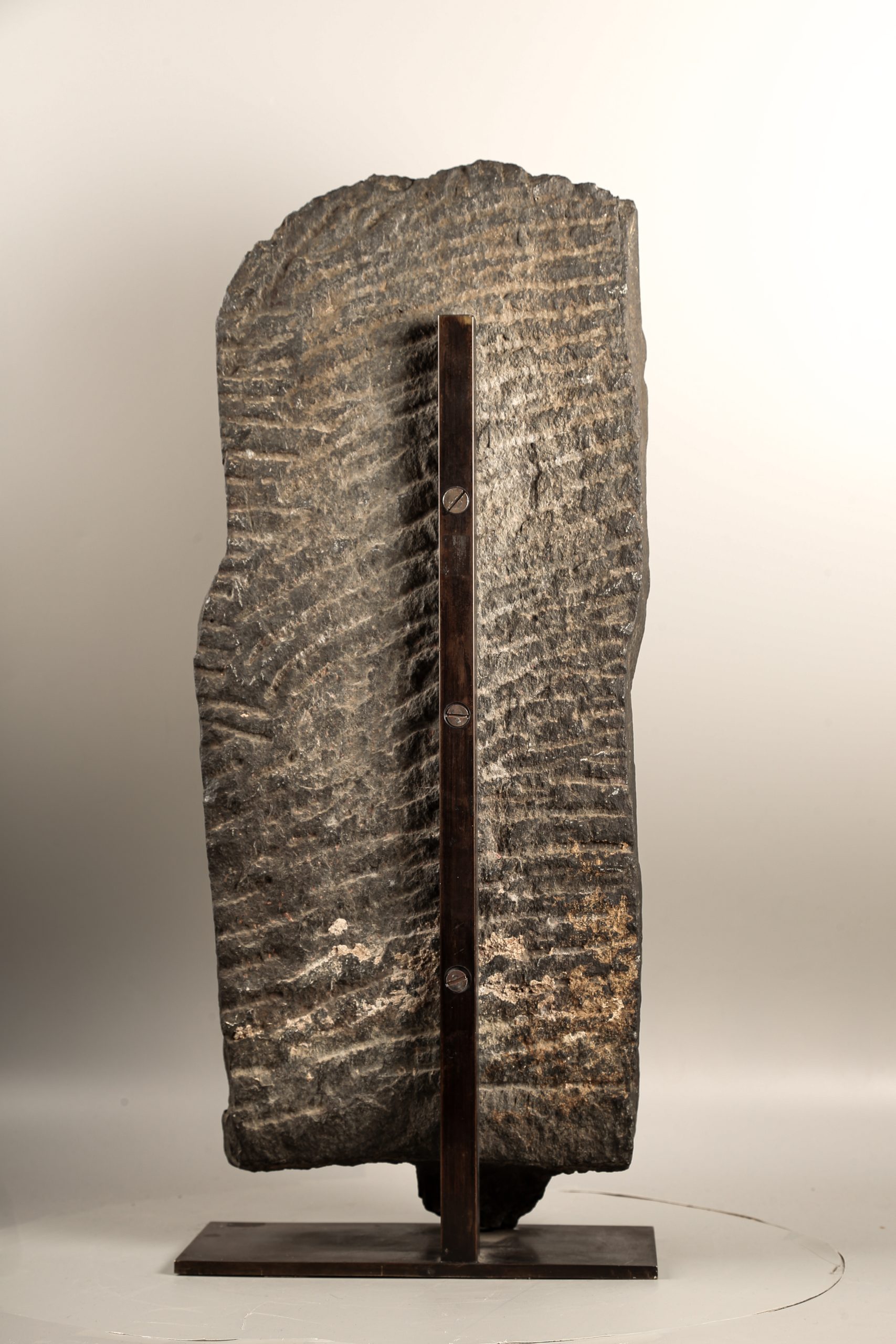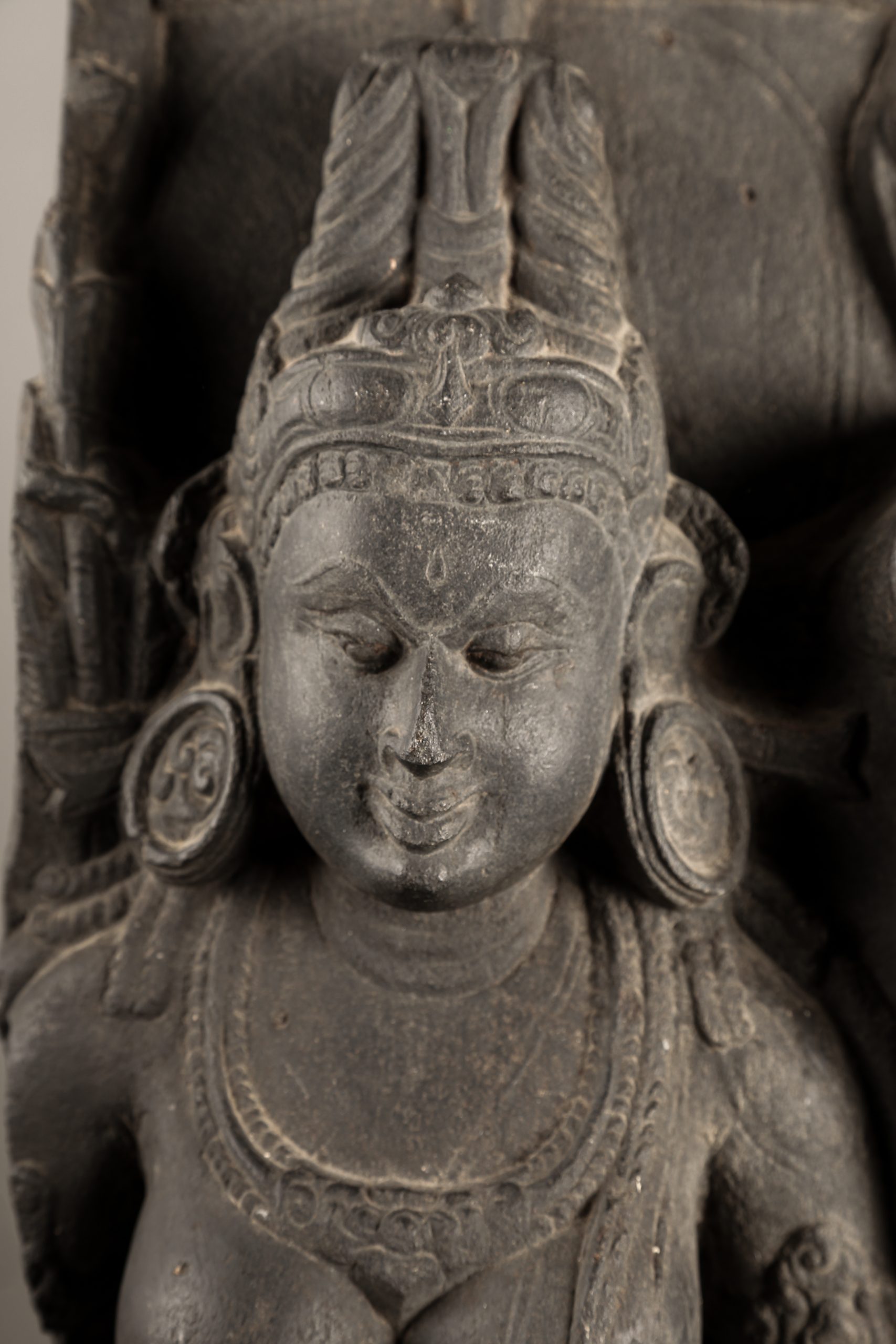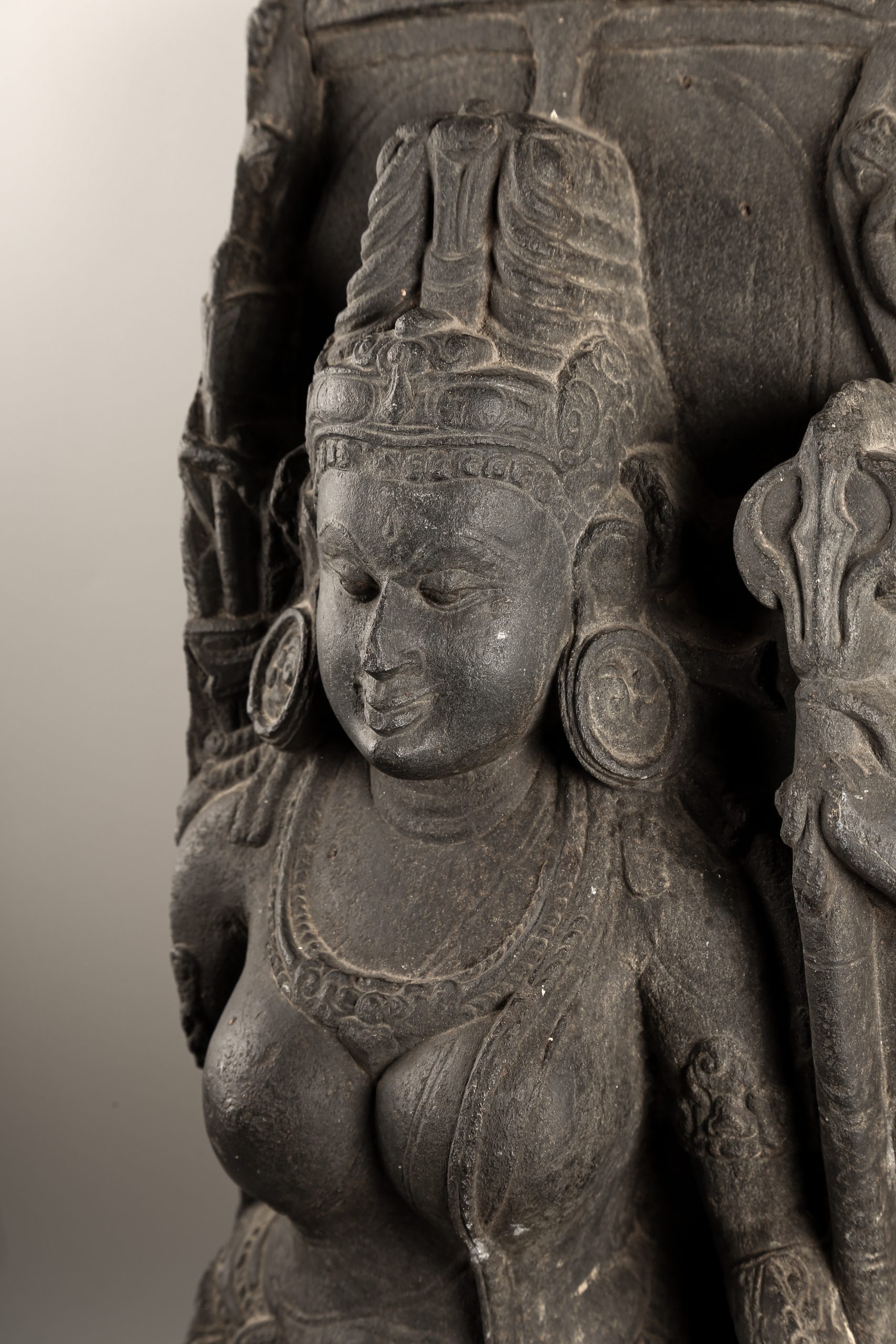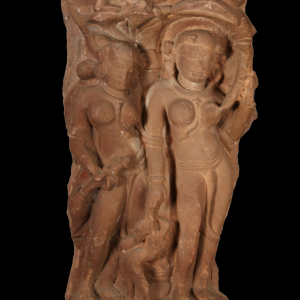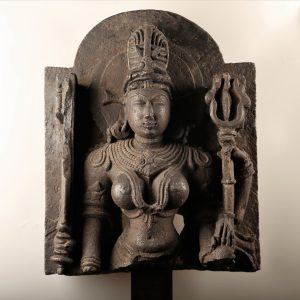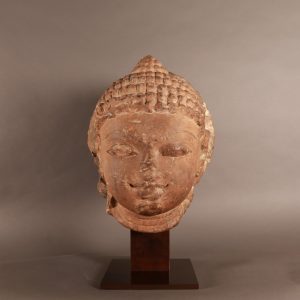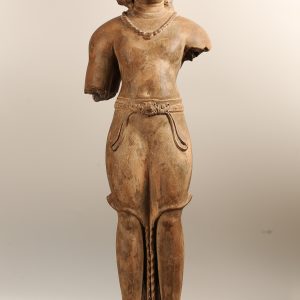Durgā
25 000,00€
Black stone
Northeast India (Bihār, Bengal)
10th-11th century, Pāla dynasty
H. 62 cm
Description
This beautiful black stone stele most probably represents the goddess of war in the Hindu Pantheon, Durgā.
Durga is indeed recognizable here by her harmonious and supple silhouette, her generous bosom embodying a feminine ideal as it was represented in medieval India. She is also represented adorned with heavy jewelry and ornamentation: imposing dangling earrings, luxurious necklaces resting on her upper chest. Her hair is done up in a structured and complex bun, similar to an ascetic’s bun. The goddess is the symbol of power, feminine energy and protection against negative forces and demons. Therefore, her stylized features are quite harsh and express defiance, typical of Durgā iconography.
According to Hindu mythology, Durga was created from the combined energies of the Hindu gods Brahma, Visnu and Siva to defeat a demon called Mahishasura. The battle between Durga and Mahishasura is considered a symbol of the victory of good over evil. That is why, in this representation, each of Durga’s hands holds the symbol of one of the above gods. She carries the trident of Siva, the chakra disc attributed to Visnu, the bow of Surya and finally the vajra given by the god Indra. Each of these attributes contributes to reinforce the warrior image of the goddess. We can also see Damon the tiger, her mount and symbol of her unlimited power lying at her feet.
This beautiful stele is dated to the 10th-11th century and is emblematic of the Pāla period as evidenced by the refined black stone work with particular attention paid to details such as the jewelry or the facial features of the goddess. The beauty of this stele also lies in the balance between iconographic richness and stylistic sobriety, typical of Pala art. The undeniable clarity of the sculpted details, the elegance of the figures and the solid background of the stele are all elements that allow us to put forward an ancient dating, around the 10th century. The work is all the more remarkable for this.
Provenance : Private collection, acquired from Jean Nies; private collection, UK, acquired in the 1980s.

